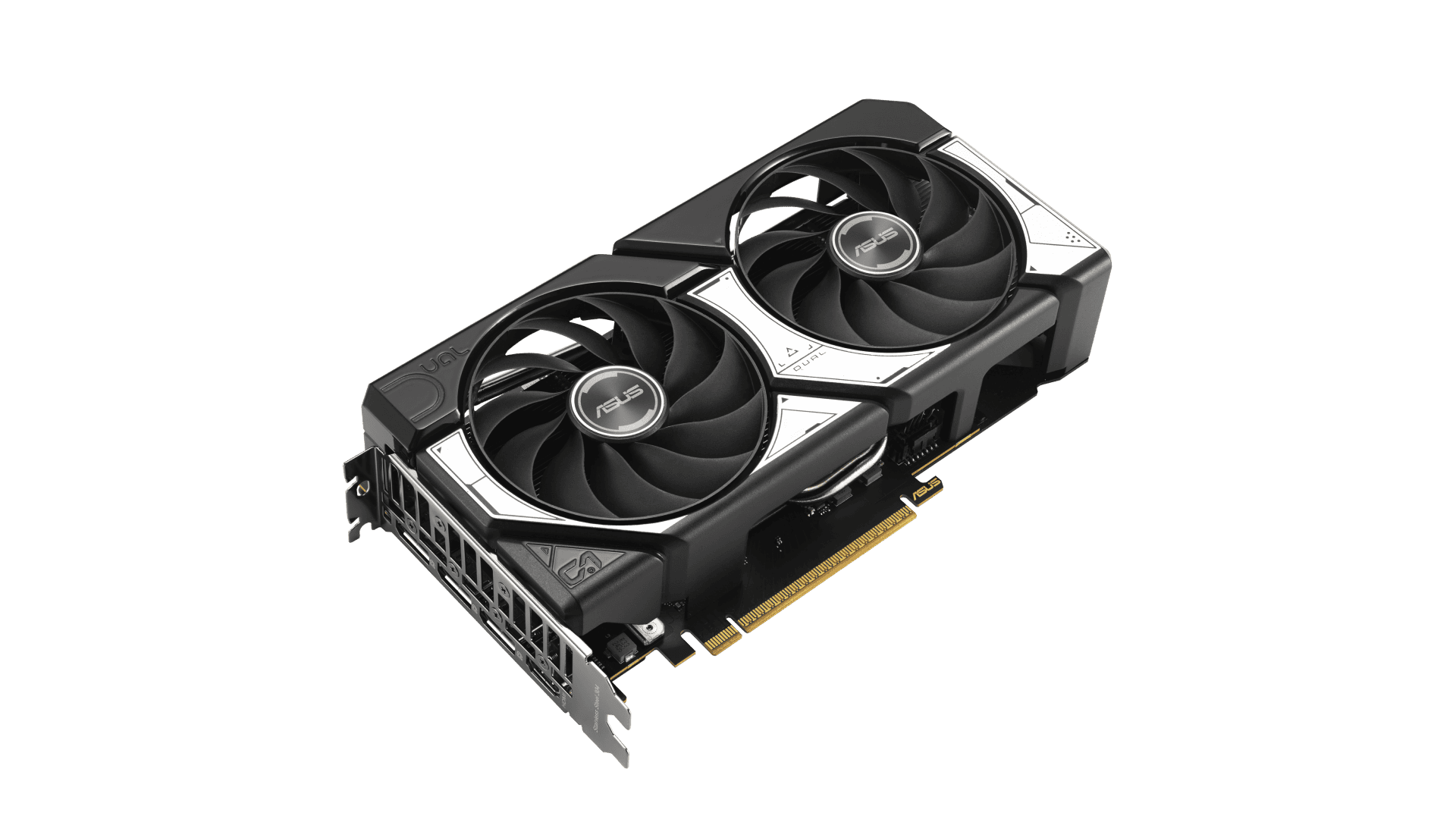NVIDIA’s GeForce RTX 5060 has officially entered the spotlight following its reveal at Computex 2025, and the early benchmarks show it’s not just another mid-range refresh—it’s a real contender in the 1080p gaming space. Built on the next-gen Blackwell architecture, priced at $299, and featuring 8GB of GDDR7 memory, this card aims squarely at gamers looking for fluid, high-FPS performance without blowing their budget.
1080p Performance Gains: More Than Just an Incremental Jump

While NVIDIA typically delivers moderate improvements between generations, the RTX 5060 is bucking that trend. In most benchmark tests, the card shows a 25–30% uplift over the RTX 4060 in 1080p gaming. Titles like Cyberpunk 2077 (RT Overdrive mode), Doom: The Dark Ages, and Alan Wake 2 benefit tremendously from DLSS 4 and NVIDIA’s new Multi Frame Generation (MFG) technology, with framerates often surpassing 200 FPS at ultra settings.
| Game Title | RTX 4060 Avg FPS | RTX 5060 Avg FPS | Performance Boost |
|---|---|---|---|
| Doom: The Dark Ages | 157 | 210 | +33% |
| Cyberpunk 2077 (DLSS) | 86 | 114 | +32% |
| Alan Wake 2 (RT High) | 48 | 63 | +31% |
These numbers make it clear: the 5060 is more than a spec bump. It’s a significant generational improvement for the price tier.
New Architecture, Familiar Trade-Offs
The RTX 5060 is the first mainstream GPU in its class to utilize GDDR7 memory, promising faster data throughput and better efficiency. However, its 8GB VRAM capacity raises some eyebrows—particularly for games with higher memory demands at 1440p and beyond. Titles like The Last of Us Part I and Hogwarts Legacy already push 8GB usage at ultra settings in 1080p, meaning performance could suffer without dialing back texture quality.
| Resolution | VRAM Utilization (Ultra Settings) | Verdict |
|---|---|---|
| 1080p | ~7.5–8.2GB | Borderline |
| 1440p | ~9–11GB | Insufficient |
| 4K | ~12–14GB | Not Recommended |
Gamers sticking to 1080p should be fine, but future-proofing remains a concern for those eyeing longevity.
DLSS 4 and Frame Generation: A Game-Changer?
DLSS 4 and MFG represent major strides for performance scaling, especially on lower-end hardware. Frame Generation allows the GPU to insert AI-generated frames between real ones, dramatically boosting framerate without demanding more raw horsepower. However, early reviewers warn that the benefits can vary by title—and the feature may require manual tuning or developer support.
Also worth noting: not all gamers are comfortable with AI-generated frames, as they may introduce slight latency or visual artifacts, particularly in competitive shooters.
Who’s It For?
The RTX 5060 is shaping up to be an ideal GPU for:
- Gamers playing at 1080p ultra settings who want smooth gameplay at high refresh rates
- Budget builders who want solid ray tracing performance without stepping into $400+ territory
- Users seeking DLSS 4 and frame generation to squeeze more value out of each watt
What it’s not ideal for: players targeting high-resolution gaming or working with large texture workloads.
Retail Landscape and Launch Reception
Despite some tech outlets being reportedly left out of early review distributions—possibly due to NVIDIA’s tighter PR control—enthusiast YouTubers and benchmarking communities have already flooded the internet with test results. Retail demand was immediate: launch-day stock sold out at major vendors like Newegg and Amazon within hours, though restocks are expected in the coming weeks. AIB models from Gigabyte, ASUS, and MSI are now hitting shelves with varied cooling solutions and factory overclocks.
Laptop variants featuring RTX 5060 mobile chips are scheduled for late June 2025, with some models already appearing in preorder listings from Lenovo and Acer.
The RTX 5060 may not rewrite the rules of mid-range GPUs, but it reasserts NVIDIA’s dominance in a market increasingly defined by value, efficiency, and intelligent upscaling. For 1080p gamers, it’s hard to ignore.
Key Takeaways
- The RTX 5060 delivers 12-25% performance gains over the RTX 4060 at 1080p resolution.
- Frame generation technology significantly boosts the card’s performance in supported games.
- VRAM limitations may impact gaming at higher resolutions despite strong 1080p performance.
RTX 5060 Benchmarks: Surprising Gains in 1080p Gaming
Recent benchmark tests show the RTX 5060 delivers stronger performance than expected, with significant improvements over its predecessor. The new card offers impressive frame rates at 1080p resolution, making it a solid choice for gamers who don’t need 4K capabilities.
In-Depth Gaming Performance Results
The RTX 5060 shows a consistent 25% performance increase over the RTX 4060 at 1080p resolution across multiple games. This jump exceeds what many analysts predicted for this price point.
In Marvel Rivals, the card performed exceptionally well, delivering 16% better frame rates than the RTX 4060. More impressively, it outpaced the RTX 3060 by 48% and the RTX 2060 by a substantial 85%.
Metro benchmarks revealed similar gains, with the RTX 5060 achieving roughly 25% higher frame rates at both 1080p and 1440p. At 4K resolution, the improvement jumps to 33%, though the card isn’t primarily designed for 4K gaming.
Several popular titles show the card comfortably exceeding 60 FPS at high settings, making it an ideal daily driver for 1080p gaming as Nvidia intended.
Synthetic Tests and Benchmark Tools
Standard benchmark tools confirm the real-world gaming performance gains. The RTX 5060 shows notable improvements in 3DMark tests compared to previous generations.
Time Spy scores revealed approximately 20-25% better performance than the RTX 4060, aligning with the gaming benchmarks. Fire Strike results were similarly strong, with the Blackwell architecture showing its efficiency in these synthetic tests.
Hardware flip metering tests demonstrate how the new architecture handles resources more effectively. This translates to smoother gameplay even when games push the hardware limits.
The synthetic benchmarks highlight the architectural advantages of the Blackwell design. Despite having 8GB of VRAM like its predecessor, the GPU processes data more efficiently through improved memory controllers and better allocation algorithms.
The improved benchmark scores correlate directly with smoother gaming experiences and fewer frame drops during intensive gaming moments.
Ray Tracing, DLSS 4, and Advanced Features
The RTX 5060’s ray tracing capabilities show significant progress over the 4060 series. Games with heavy ray-traced effects run 15-20% faster on average.
DLSS 4 implementation provides a major boost to performance. When enabled, frame rates often increase by 60-80% with minimal quality loss compared to native resolution rendering.
Multi-Frame Generation (MFG) technology proved to be a game-changer for the RTX 5060. This feature helps maintain high frame rates in demanding titles that would otherwise struggle on mid-range hardware.
The new RTX Neural Shaders improve lighting and shadow quality with less performance impact than traditional methods. Path tracing also runs better on this generation, making more advanced lighting techniques accessible at the mid-range price point.
Neural rendering capabilities show marked improvement over the previous generation. The AI components of the card handle complex calculations more efficiently, freeing up traditional GPU resources for other tasks.
Temperature, Power Efficiency, and VRAM Analysis
Power consumption tests show the RTX 5060 uses roughly the same power as the RTX 4060 while delivering better performance. This translates to higher performance-per-watt, a key metric for efficiency.
Thermal testing reveals the card maintains temperatures around 65-70°C under full load in a well-ventilated case. This is comparable to the previous generation despite the performance gains.
The 8GB VRAM limitation remains a point of discussion. While sufficient for most current 1080p gaming, some reviewers expressed concern about future-proofing, especially as textures grow larger in upcoming titles.
Tests with VRAM-hungry games show the RTX 5060 manages resources well at 1080p and 1440p resolutions. However, at 4K or with ultra texture packs, the memory limitation becomes apparent.
A 16GB model has been mentioned in some reports, which would address the primary criticism of the base model. This version might be better suited for gamers looking for more longevity from their purchase.
RTX 5060 Versus Competitors and Prior Generations
The RTX 5060 shows impressive performance gains over previous generations, particularly in 1080p and 1440p gaming scenarios. Benchmark results indicate a 20-25% improvement over the RTX 4060, with some games showing even larger margins.
Comparisons With Previous GeForce RTX Cards
The RTX 5060 demonstrates significant improvements over its predecessors. Compared to the RTX 4060, it delivers approximately 20-25% better performance in most gaming scenarios. This jump is most noticeable at 1080p and 1440p resolutions.
Against the RTX 3060, the gains are even more substantial, with benchmarks showing a 48% performance increase. The difference becomes even more dramatic when compared to the RTX 2060, where the 5060 pulls ahead by a whopping 85%.
For those considering an upgrade path, the RTX 5060 sits below the previous generation’s RTX 4070 in raw performance, though it brings newer technologies to the table. The 8GB GDDR7 memory, while maintaining the same capacity as the 4060, offers improved bandwidth.
Marvel Rivals showed particularly impressive results, with the 5060 outperforming the 4060 by 16%.
AMD and Third-Party Graphics Card Comparisons
When pitted against AMD’s offerings in the same price bracket, the RTX 5060 holds its own quite well. While detailed benchmarks against AMD’s RDNA 4 architecture cards are still emerging, early tests suggest Nvidia maintains its advantage in ray tracing performance.
The $299 price point positions the RTX 5060 as a direct competitor to AMD’s mid-range cards. This pricing decision keeps it accessible to budget-conscious gamers without a generational price increase from the RTX 4060.
Third-party variants from manufacturers like MSI with their Gaming Trio line are expected to offer slight performance boosts through factory overclocks. These partner cards typically provide better cooling solutions and more robust power delivery systems.
The value proposition appears strong, especially for gamers focused primarily on 1080p gaming with occasional 1440p play.
Notable 1080p and 1440p Gaming Titles Tested
The RTX 5060 was put through its paces across several demanding titles. In Metro benchmarks, it demonstrated a solid 25% performance increase at both 1080p and 1440p, with an impressive 33% jump at 4K resolution.
Popular Titles Tested:
- Cyberpunk 2077
- Alan Wake 2
- Horizon Forbidden West
- Resident Evil 4
- Black Myth: Wukong
- Steel Nomad
Frame generation technology proves particularly beneficial, boosting framerates by 20-25% in compatible titles. This feature helps the card deliver smooth 1440p gaming experiences in titles that would otherwise struggle.
The 8GB VRAM limit initially raised concerns for 2025 gaming requirements. However, testing shows this is generally sufficient for 1080p gaming and many 1440p titles, though some texture-heavy games may require reduced settings at higher resolutions.
RTX 5060 Hardware Specifications and Innovations
The RTX 5060 brings several technical improvements over its predecessor:
Key Specifications:
- 8GB GDDR7 memory
- Enhanced CUDA cores
- Improved RT cores for ray tracing
- Tensor cores optimized for AI tasks
- PCIe Gen 5 support
- Blackwell architecture benefits
The card’s Blackwell architecture delivers efficiency improvements alongside raw performance gains. This translates to better performance-per-watt metrics compared to Lovelace-based cards.
New innovations include improved Mega Geometry processing and enhanced full ray tracing capabilities. The RTX 5060 also benefits from DLSS advancements, which help bridge performance gaps when gaming at higher resolutions.
Despite maintaining 8GB of VRAM, the switch to GDDR7 provides increased memory bandwidth, helping alleviate some potential bottlenecks. The card’s power requirements remain reasonable, making it compatible with most existing systems without power supply upgrades.
Frequently Asked Questions
The RTX 5060 brings significant improvements for 1080p gamers while raising questions about its VRAM limitations and overall value proposition. Nvidia’s latest entry-level GPU offers performance gains but comes with certain tradeoffs that potential buyers should understand.
What performance improvements does the RTX 5060 offer over its predecessors for 1080p gaming?
The RTX 5060 delivers approximately 25% better performance than the RTX 4060 at 1080p resolution. This improvement jumps to 48% when compared to the RTX 3060 and 85% over the RTX 2060.
These gains are most noticeable in newer titles that utilize Nvidia’s latest technologies. Games like Metro and Marvel Rivals show particularly strong improvements.
However, the 8GB VRAM limitation may require lowering texture settings in some of the newest games to maintain smooth performance.
How does the RTX 5060 compare to its competitors in the same price segment?
The RTX 5060 positions itself as a strong 1080p gaming card at its $300 price point. It outperforms previous generation cards from both Nvidia and AMD in this segment.
For pure rasterization performance (traditional rendering), some AMD alternatives may offer better value. However, the RTX 5060 pulls ahead when ray tracing and DLSS are factored in.
The card excels in esports titles, delivering high frame rates that competitive gamers need.
What is the power efficiency of the RTX 5060 compared to previous-generation graphics cards?
The RTX 5060 continues Nvidia’s trend of improving power efficiency with each generation. It consumes less power than the RTX 3060 while delivering nearly 50% better performance.
This efficiency translates to lower heat output and potentially quieter operation. Systems with the RTX 5060 typically require less robust cooling solutions than comparable previous-gen setups.
Power consumption under load generally stays below previous generations while idle power draw has been further optimized.
Are there any significant architectural changes in the RTX 5060 that affect gaming performance?
The RTX 5060 features Nvidia’s newest architecture with improved ray tracing cores and tensor cores. These enhancements directly boost performance in games using these technologies.
Memory bandwidth has been optimized despite maintaining the same 8GB VRAM capacity as its predecessor. This helps performance but doesn’t address the fundamental VRAM limitation.
The card also includes the latest generation of video encoders, beneficial for streamers and content creators who game at 1080p.
What is the expected retail price point for the RTX 5060?
The RTX 5060 launches at an MSRP of $300, positioning it as an entry-level option in Nvidia’s 5000 series lineup. This price point targets mainstream gamers looking for solid 1080p performance.
Actual retail availability and pricing may vary based on market conditions and partner card designs. Premium versions with better cooling and factory overclocks will likely cost $30-50 more.
Early adopters should consider waiting for more comprehensive reviews and potential price adjustments before making a purchase decision.
Can the RTX 5060 handle ray tracing and DLSS at 1080p with stable frame rates?
Yes, the RTX 5060 handles ray tracing effectively at 1080p when paired with DLSS. Frame rates remain stable in most current titles with these features enabled.
DLSS 3.5 provides significant performance boosts, allowing the card to maintain 60+ FPS in ray-traced games that would otherwise struggle. This technology is crucial to the card’s value proposition.
Without DLSS enabled, ray tracing performance is more limited, requiring users to choose between visual quality and smooth gameplay in the most demanding titles.







